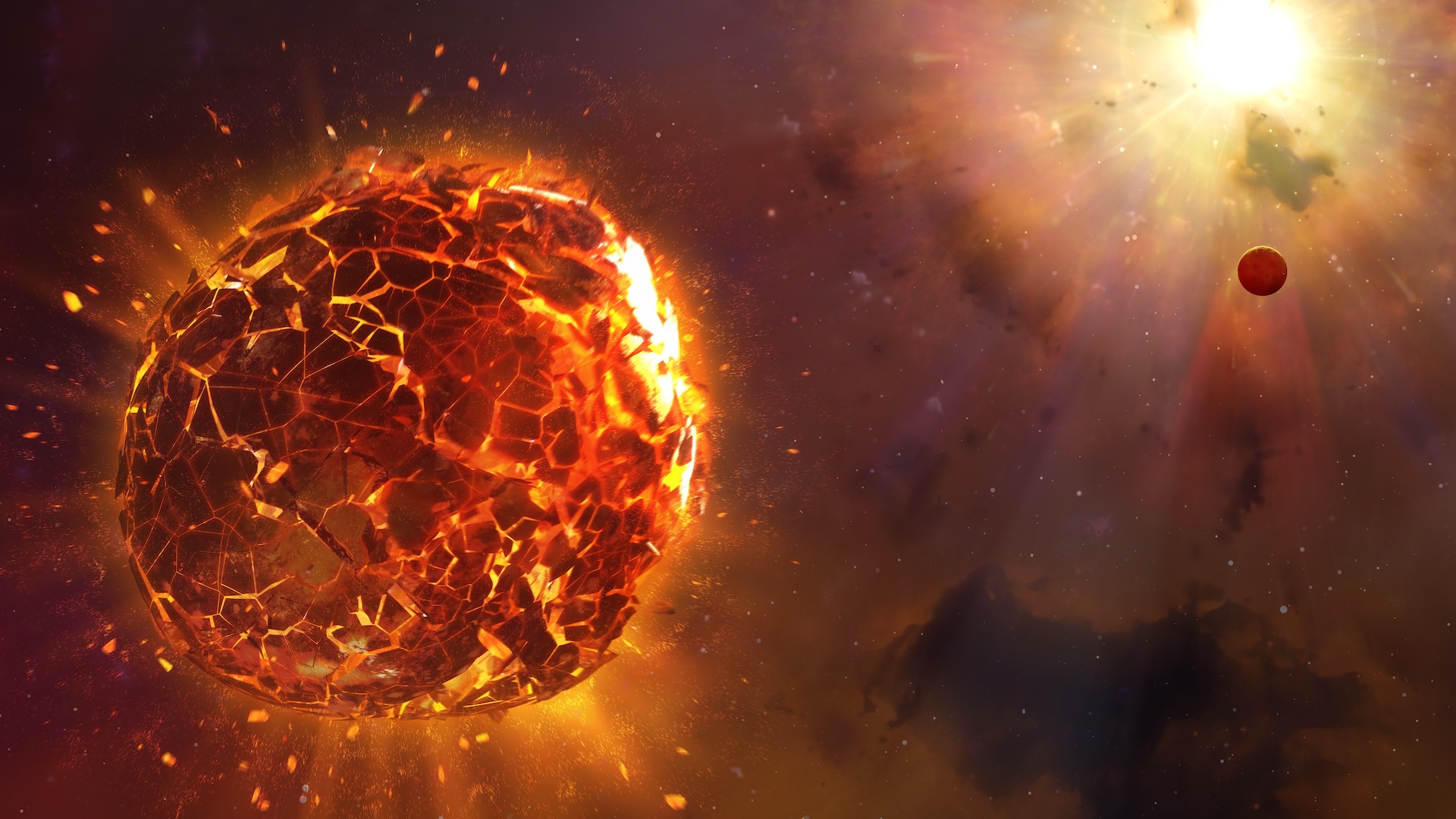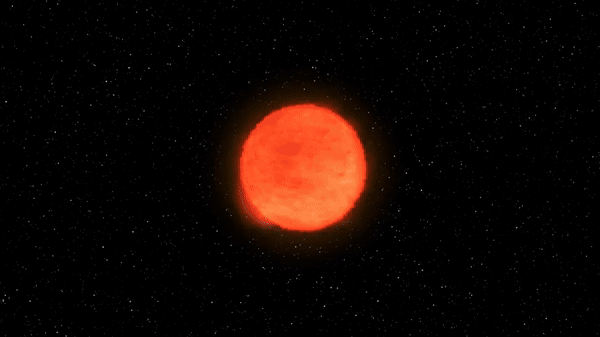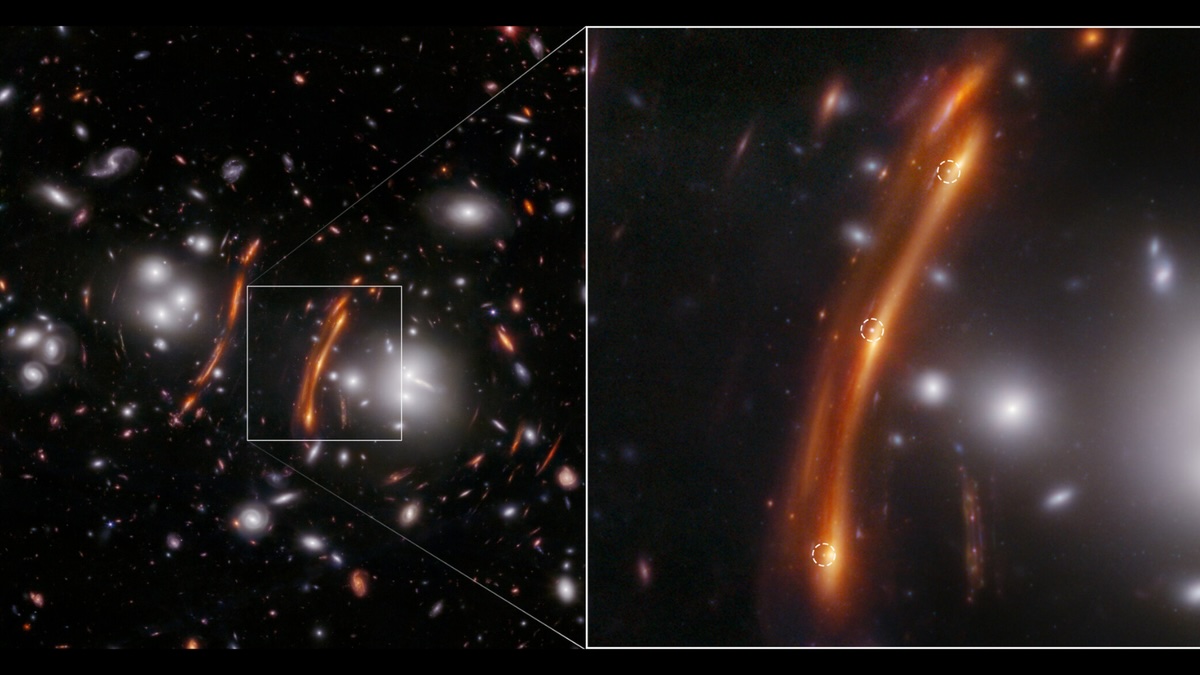Could a supernova ever destroy Earth?
When stars explode as supernovas, they can cause serious cosmic carnage. Is Earth in any danger from any nearby stars?

When the bright star Betelgeuse explodes, it will be an impressive sight. The stellar explosion, known as a supernova, will be brighter than any planet and almost as bright as the full moon. It will be visible during the day, and you could read a book to its light at midnight. It will last a few months before fading away, as all supernovas do.
But it won't be dangerous. For that, it would have to be much, much closer; Betelgeuse is roughly 650 light-years away. So are there any stars that pose a threat to us?
To estimate how close a supernova would have to be to cause serious damage to Earth, we must look at a supernova's destructive capabilities.
First, there's the shock wave from the explosion itself. But trust me: If you're close enough to a supernova to be worried about the shock wave, then you're close enough to the pre-supernova star to have gotten a lethal dose of radiation already, and you really should have moved away a long time ago.
Next, there's visible light. Although it may be impressive and lead to blindness, it won't be a factor in damaging our planet.
Speaking of energy output, the vast majority of the energy emitted by a supernova is in the form of neutrinos, ghostly particles that hardly ever interact with matter. In fact, there are trillions of neutrinos passing through your body right now, and I bet you didn't even notice them. So even if you got a supernova's worth of neutrinos in your face, it would not bother you.
But what about other wavelengths of light, like X-rays and gamma rays? The good news is, supernovas tend not to produce copious amounts of high-energy radiation. But the bad news is, that's only in a relative sense. On any reasonable absolute scale — like just how many gamma rays are going to pass through the atmosphere — it's still a ton of high-energy radiation.
Get the world’s most fascinating discoveries delivered straight to your inbox.
And lastly, there are cosmic rays, particles accelerated to nearly the speed of light. Supernovas are capable of making copious amounts of cosmic rays, which can deal some serious damage.
Related: Extremely rare 'failed supernova' may have erased a star from the night sky without a trace

Blast radius
So what makes all those X-rays, gamma rays and cosmic rays so harmful to Earth? These forms of radiation pack enough energetic punch that they can tear apart molecular nitrogen and oxygen. Those elements in Earth's atmosphere prefer to float around as molecules. But once broken apart, they recombine in interesting and fascinating ways — for example, they make various nitrogen oxides, including nitrous oxide, aka laughing gas — which leads to a depletion of the ozone layer.
Without an ozone layer, Earth is vulnerable to ultraviolet radiation from the sun. That doesn't mean just quicker tans, faster burns and higher rates of skin cancer. Photosynthetic microorganisms, like algae, become vulnerable. In essence, they get cooked and die. And because they form the base layer of the food chain, the whole ecosystem collapses and there's a mass extinction.
For the supernovas that tend to occur in our galaxy, a dying star would have to be within roughly 25 to 30 light-years of Earth to strip away at least half of the ozone layer, which would be enough to trigger all of the aforementioned bad things.
And here's some good news to help you sleep at night: There are no known supernova candidates within 30 light-years of Earth. The nearest candidate, Spica, is about 250 light-years away, and there are no stars that will become supernova candidates and approach within 30 light-years of Earth in their lifetimes. So we're safe in that regard, at least for now.
Over longer timescales, however, things start to get more interesting, as they tend to do with entities posing existential risks to entire biospheres.
One of the fun things is that our solar system is just now entering the Orion spiral arm of the Milky Way, and spiral arms are known for their advanced rate of star formation (hence why they tend to stick out in pictures). But higher rates of star formation mean higher rates of star deaths — which mean a greater-than-average chance of getting too close for comfort in the 10 million years it will take us to cross the arm.
Once you consider all of these factors, you end up with estimates of a potentially lethal supernova encounter a few times every billion years.
In fact, some astronomers think a nearby supernova caused a mass extinction 360 million years ago, which killed 75% of all species.

Don't sleep on it
But there's a small caveat: This analysis applies only to typical, run-of-the-mill supernovas. There's also a special case where the dying star is enshrouded by a thick layer of dust. When the supernova shock wave hits that dust, it releases a flood of X-rays, followed by a blast of cosmic rays centuries later. It's a nasty one-two punch: The X-rays can travel over 150 light-years, weakening a planetary atmosphere, and then a few hundred years later, the cosmic rays finish the job.
And then there are Type Ia supernovas, which are triggered when white dwarfs — the superdense remnants of low- or medium-mass stars like the sun — accumulate material from an orbiting companion. But white dwarfs are generally small and dim — so they're much harder to detect, and their final evolution toward a supernova is much more random. One day, they're just hanging out, and the next, they're turning themselves into a nuclear inferno.
Thankfully, the nearest candidate is the binary white dwarf IK Pegasi, which sits safely about 150 light-years away.
Before you get too complacent, though, you should know about gamma-rays bursts, which result from neutron star mergers and hypernovas. They are much more dangerous because they are incredibly powerful and their explosive energies are focused into narrow beams that can punch over 10,000 light-years through a galaxy. Because gamma-ray bursts are much more distant than supernovas, they are more difficult to predict and plan for.
Sleep tight!
Originally posted on Space.com.

Paul M. Sutter is a research professor in astrophysics at SUNY Stony Brook University and the Flatiron Institute in New York City. He regularly appears on TV and podcasts, including "Ask a Spaceman." He is the author of two books, "Your Place in the Universe" and "How to Die in Space," and is a regular contributor to Space.com, Live Science, and more. Paul received his PhD in Physics from the University of Illinois at Urbana-Champaign in 2011, and spent three years at the Paris Institute of Astrophysics, followed by a research fellowship in Trieste, Italy.



